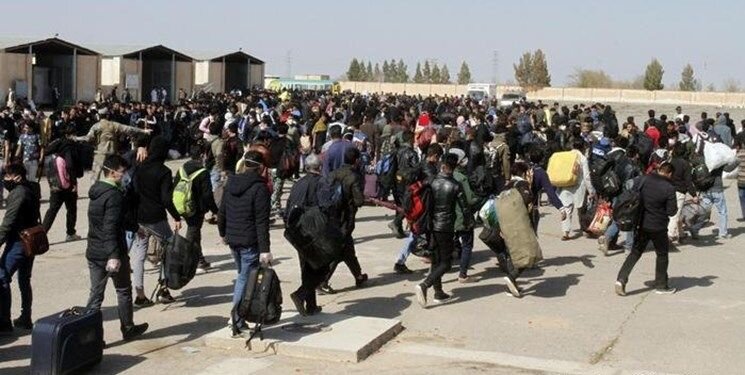Over 13,000 Afghan nationals deported from Khorasan Razavi border

TEHRAN –A total of 13,204 illegal Afghan nationals have been sent back to their homeland through borders in Khorasan Razavi province.
“In line with the policy to deal with illegal nationals in the country, they were identified over the past week,” IRNA quoted Majid Shoja, the commander of Khorasan Razavi province’s border police, as saying.
“The illegal nationals were returned via Dogharon and Taybad borders and handed over to the representative of Afghanistan,” Shoja said.
He went on to say that Afghan nationals who intend to enter or have entered the country without meeting the legal requirement for entry and permission will be arrested and expelled from the country.
“Afghan refugees who intend to enter the country must enter through official and legal borders,” Shoja highlighted.
No permission to stay
Unauthorized foreigners have no permission to stay in the country and receive services, IRIB quoted Interior Minister Ahmad Vahidi as saying.
Paying a visit to a center for organizing immigrants in the city of Karaj, he added illegal foreign nationals will be identified and sent to specific camps and then returned to their homeland.
“Illegal foreign immigrants are treated with dignity even though they have entered Iran's borders illegally,” Vahidi added.
Deported illegal Afghan nationals
“Since July 23, around 450,000 undocumented foreign nationals have been sent back to their own country,” ISNA quoted Javad Khani, an official with the National Migration Organization, as saying on November 19.
"The deported migrants were those who had illegally entered the country," he added.
The provinces that host the majority of foreigners are Tehran, Sistan-Baluchestan, Khorasan Razavi, Qom, Kerman, Yazd, Fars, and Alborz, respectively, as 92 percent of the total national foreigners are residing in these provinces, he added.
Khani went on to say, “So far, one million smart identity cards have been issued to foreigners.”
He referred to blocking the borders as one of the basic measures to deal with the entry of illegal migrants, adding that most of the migrants are from Afghanistan.
On October 7, around 328,000 Afghan migrants who had illegally entered Iran during the first half of the Iranian calendar year (starting on March 21), were sent back through the borders of the northeastern Khorasan Razavi province, IRNA reported.
Shoja said that 488,000 Afghans officially and legally entered the country within the same period.
On August 1, more than 7,500 illegal Afghan migrants were deported to their home country.
No more capacity for immigrants
In November, the head of Iran’s immigration organization said, “Iran has no longer the capacity to accept new immigrants, and if the international community does not bear the responsibility for supporting refugees in Iran, most of them will migrate to European countries.
Abdollah Mobini made the remarks at the 114th Session of the Council of the International Organization for Migration (IOM) in Geneva, held from November 27-29, IRNA reported.
Highlighting the disproportionate burden of hosting refugees by the international community, Mobini said, “Iran has far exceeded its share in hosting and supporting refugees; the international community should consider the fair distribution of this international responsibility.”
Migration is driven by several factors, including political, and military interventions and climate change in the neighboring countries of the Islamic Republic of Iran, in the shadow of the military interventions of extra-regional countries in Afghanistan and Iraq; Iran has hosted several million refugees and displaced persons for more than four decades, he added.
Mobini went on to say, “Security and economic problems and constraints such as banning male and female students from studying have been among the reasons for the displacement of Afghan nationals and their migration to neighboring countries.”
MT/MG
Leave a Comment